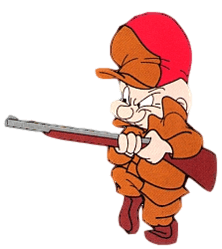MUDA – MURI – MURA
LEAN is a non-waste management philosophy. But what are these wastes.
3 large families are listed :
One of the central activities in the LEAN, is hunting these waste. The objective is to identify and eliminate them.
MUDA
MUDA, the most obvious waste, are 7. We also discuss a MUDA 8th.

Overproduction
This is the worst waste because it generates all the others.
- Overproduction is producing more or in advance and therefore more than is really needed for the next step.
- Overproduction must be reduced with caution as its causes often come from complex problems.
Overproduction : What we found in the wood furniture industries?
- Too many cut pieces, as it completes optimizations with “standard” parts.
- Too many cut pieces as are used angled saws having a large capacity and it is necessary to use thereof.
- Large batch for edge banding because double machines are used for which the setting to change dimensions are long.
- Large batch for drilling because the drills are not flexible.
- Furniture body assembly and queued before finishing thereof.
- Large batch of products because the paint finishing line is a “monument” and it is necessary to optimize it.
- Important work batch in front of the planer thereof is not flexible.

Waiting
- These are all situations where someone or something is waiting. It is a waste because the wait causes the non-use of a resource (area, machine, man).
- This applies to all services of a company
Waiting : What we found in the wood furniture industries?
- Waiting panels on a saw.
- Pending optimization file on a saw.
- Wait for the glue heater trays on an edge banding.
- Wait for confirmation of delivery before starting the production of an order.
- Pending validation of a production quality control.
- Waiting for good drying humidity of a lot of wood because it was not delivered with the right specifications.

Transport
- These are all movements of products or records, regardless of their reason. This applies to all company departments. Any transport brings no added value.
- Some waste can be both unnecessary transportation and unnecessary trips when the handling is performed by a person.
Transport : What we found in the wood furniture industries?
- Transfer of furniture from the pre-assembly position to the clamp.
- Transfer of furniture from the clamp to the assembly line.
- Transfering stack of pieces between routing machine.
- Transfer boards between unloading truck – waiting stock – dryers.
- Transfer stacks of pieces to handle an work in process.
- Transfer varnish cans.
- Moving furniture components of the general store to workshop and then to work station.
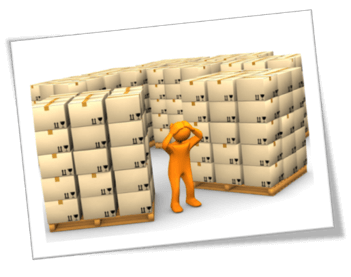
Inventory
- These are all products or services in process (raw materials or customer demand, in-process and finished or finished files to be transmitted). The presence of inventory is not a sign of process control. It is also a major cost in square meters, handling and management. Finally, it is often an asset cash which the company would benefit from without.
Inventory : What we found in the wood furniture industries?
- Stacks of pieces cutted and machining wait
- Stacks of machined pieces in stock and on roller tables
- Furniture pre assembled and awaiting finishing
- Stock of finished goods waiting for expedition
- Large stock of hardware
- Large stock of doors subcontracted
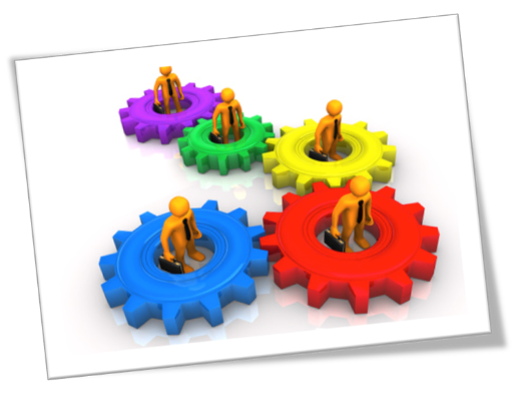
Over-processing
- These are all unnecessary or poorly performed tasks. In general, it comes from poor design or inadequate tools.
- These are the operations in the manufacturing process that are not required to meet the customer needs.
- It is not easy to identify these wastes. Yet they are essential because they can be expensive.
Over-processing : What we found in the wood furniture industries?
- Single sided edge banding for pieces which are not square.
- Too short drying tunnel does not allow the drying of a varnish.
- Angular saw panels sized to 5 at a time, while the work is done by order panel by panel.
- High speed planer while machining lots are very small.
- Dryers large volume while drying batches are low.
- Plating on non visible edges.
- Drawing sides 1:100 while the need is 1:10.

Motion
- These are all motions of people, whatever their reason. We find this waste everywhere, in all sectors, all businesses, all activities.
- These movements can take place with or without a product wear anything.
Motion : What we found in the wood furniture industries?
- Go get cutting optimization file at the office.
- Go get the tools at the sharpening service.
- Pick the components of a mounting current furniture in stock.
- Fetch the hardware store during assembling a furniture.
- Transporting furniture by hand from clamp to assembling line.
- Moving stacks of pieces, to take that which is in the middle.

Defects
- These are all waste that are identified easily. Yet some scrap and waste seem so “normal” that they are not identified as wasteful.
- A scrap matches a job done and has not led to the desired result. It will therefore be destroyed and remade (or corrected and redone for services).
Defects : What we found in the wood furniture industries?
- Poor edge banding : Improper trimming, lack of edge.
- Unsound knots problems on wooden doors or siding blades.
- Splinters when drilling.
- Squareness bad parts.
- Melamine defects detected from the panel and once the completed furniture, during the final inspection.
- Bad sanding before finishing.

Unused skills
- Many teams are still separated between those who think and design and those who realize.
- Experience shows that the involvement of those who carry out the design of their position generates significant waste disposal.
- Workshop observations are very instructive. Go without so wasteful.
Skills : What we found in the wood furniture industries?
- Workshop knowledge by operators never used by the research department.
- The operator reaching the world of mechanics and which one does not want to take what it can bring.
- The “old carpenter” who, although he does not know the industry, has perfect knowledge of the wood.
- Do not listen to an operator who complains of noise on his machine.
MURI
MURI represent the excess, unreasonable. It is the use of means disproportionate to the real to achieve the desired result.
Some MURI that we find in the wood industries and furniture.
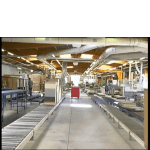
Roller lines for storage
Many companies have moved from stock management with large batches in a management by order with very small batches. But, they continue to use the roller tables, which immobilizes a large place. Working by order requires working with another handling system for example carts by order.
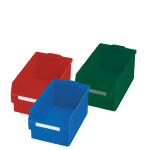
Storage Boxes – Palettes
Often at hardware store, or along the assembly lines, the parts are stored in containers that do not correspond to the volume: pallets for a few pieces of low volume, high volume tray of hardware …
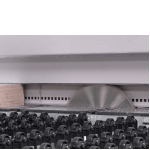
Panel saws
With this type of machine, it is common to see excessive:
- Saw scheduled for 6/8 panels sawing thick, while the company works by order, with a large choice of colors and thus delivers the panels to the unit.
- Very large angle saw, whereas two “small” mono-saw blade would be much more productive and this for a lower investment.
- Saw panels planned for 5600 X 2100 while the supply is done only panels of 2800 x 2100.
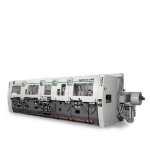
High speed planing line
The value of the investment of this type of line lies only in the event that production batches are important. For, otherwise, it is possible to see lines where the setting time is 10 minutes and the production time is 5 minutes!
Oversized forecast
To avoid the risk of breakage, forecasts are oversized. This generates very large inventory and the risk of expired products. animation_type=”0″ animation_direction=”down” 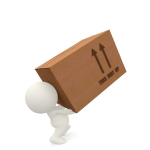
Physical overload
Physical overload, arduousness bring a waste of energy and health.
Too heavy loads, large displacements, …
MURA
MURA represent variability, irregularity ..
This variability can come from equipment problems, raw materials problems, labor problemes, but also organizational problems.
For all these waste caused by an irregularity, the cause is to be sought elsewhere. Therefore, it is often difficult to eradicate waste. To reduce the MURA, we must work on standard, repeatability and capability of the machines.

Cutting lenght
The cutting lenght of the edge banding in the machine can be variable.
The cutting length on a digital chainsaw may be inaccurate.

Nuance color
In a manual paint application or on an application robot, it can there be any irregularities in colors. This can come from hardware issues, human or raw material.
Wood feature
Wood is a heterogeneous material. Its characteristics may vary over time and according to the batches.
Similarly, the relative humidity of the wood can vary from one batch to another.
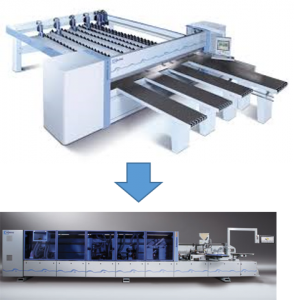
Irregular flows and cycles
Irregularities can appear in flows and cycles. For example, a saw will work according to the raw materials (panels), while the following edge banding can work depending on the size or type of plated edges.
All these waste seem obvious to you!
If you were a customer, would you be willing to pay the most expensive product to make up for all this waste (motion, re-manufacturing, waste of time …).
I don’t think so.
Your objective is to identify and then remove.
For this you can use a set of tools for LEAN :
- VSM
- 5S
- SMED
- Problem solving
- TPM
- Pull flow
- …
